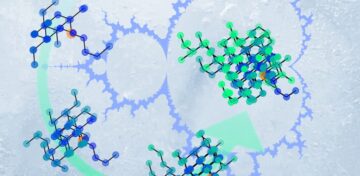The modern Pacific Ocean hosts the largest oxygen-deficient zones (ODZs), where oxygen concentrations are so low that nitrate is used to respire organic matter. Scientists have looked to the past for historical clues in trying to predict the scale and location of future dead zones.
An international team of scientists reported in a new study that today’s largest open ocean dead zone emerged 8 million years ago due to increasing ocean nutrient content.
Boston College Assistant Professor of Earth and Environmental Sciences Xingchen “Tony” Wang, a lead author of the report, said, “While the sources of nutrient enrichment today may be different, the mechanics that created what scientists call “oxygen-deficient zones” remain the same. A better understanding of ocean dead zones from the past may help future ocean conservation efforts.”
“To better protect marine ecosystems and manage fisheries, it is critical to predicting how an ocean ‘dead zone’ will evolve in the future.”
A coastal ocean dead zone is primarily brought on by the overabundance of nutrients people use on land, such as fertilizer. Every year, the Mississippi River‘s human fertilizers cause a dead zone the size of the state of New Jersey in the northern Gulf of Mexico.
Wang said, “These zones also occur naturally in the open ocean, with the largest found in the eastern Pacific Ocean. It remains unclear how these dead zones will change as the planet warms. So, we studied the history of the eastern Pacific dead zone to predict its future behavior better.”
Scientists, in this study, set out to determine the evolution of open ocean dead zones before human activity began to impact the ocean. They also decided to see if these dead zones always exist. If so, why?
To do so, they examined the chemical composition of ocean sediments near today’s largest ocean dead zone. They obtained sediment samples going back 12 million years and analyzed nitrogen contained in microfossils known as foraminifera.
The scientists searched the dead zones for evidence of denitrification, which can place when oxygen levels are so low that microorganisms must use nitrate as their primary source of energy. Microbes prefer to eat the lighter nitrogen-14 isotope during denitrification, which has two stable isotopes: nitrogen-14 and nitrogen-15.
Expanded oxygen-deficient zones also lead to the expansion of denitrification zones. According to the report, it could raise the nitrogen-15 to nitrogen-14 ratio of the remaining nitrate, which is then recorded in ocean organisms such as foraminifera by cycling nitrogen in marine ecosystems.
Wang said, “By analyzing the nitrogen-15 to nitrogen-14 ratio of foraminifera in ocean sediments, we can reconstruct the history of the extent of oxygen deficient zones.”
Scientists also analyzed the phosphorus and iron content of the same sediments. Their analysis revealed the ancient nutrient content in the deep Pacific Ocean.
Woodward W. Fischer, a co-author of the study and professor at the California Institute of Technology, said, “Deep-ocean nutrient content is hard to reconstruct, and our record is the first of its kind over the past 12 million years; its trends have important implications for the global carbon cycle and climate change.”
Wang said, “The sedimentary records showed the team that the largest open ocean dead zones gradually expanded over the past 8 million years.”
“Further, the expansion of these dead zones was mainly caused by nutrient enrichment. This mechanism is similar to the formation of dead zones in today’s coastal waters, except that humans are responsible for the current nutrient enrichment.”
Wang said, “These findings may help better predict the future behavior of open ocean dead zones. For example, human activities have been adding more and more nitrogen to the ocean. They can support the need to improve climate and ocean models to better gauge the impact of anthropogenic nitrogen on the deoxygenation processes in the open ocean.”
Fischer said, “The nutrient increase since 8 million years ago was likely caused by increased weathering and erosion on land, which would increase the delivery of phosphorus to the ocean.”
Wang said, “In addition, terrestrial ecosystems underwent a major transition between 8 and 6 million years ago. Many forests were replaced by less dense grassland, known as the expansion of C4 ecosystems. With more grassland, soil erosion might have increased during this period, and it would have triggered a greater transfer of organic nutrients to the ocean.”
“A likely next step in this research would be to determine how the flow of nitrogen into the ocean from human activity can impact the ocean’s nutrient cycle.”
“The key questions lie in our coastal zones, where the most anthropogenic nitrogen enters the ocean. If most anthropogenic nitrogen is removed in coastal regions—essentially by denitrification taking place in the sediments—then that could lessen the impact on the whole ocean. Our research group at BC is currently doing some work in the Northern Gulf of Mexico to better understand the fate of anthropogenic nitrogen in the ocean.”
Journal Reference:
- Xingchen Tony Wang, Oceanic nutrient rise and the late Miocene inception of Pacific oxygen-deficient zones, Proceedings of the National Academy of Sciences (2022). DOI: 10.1073/pnas.2204986119













